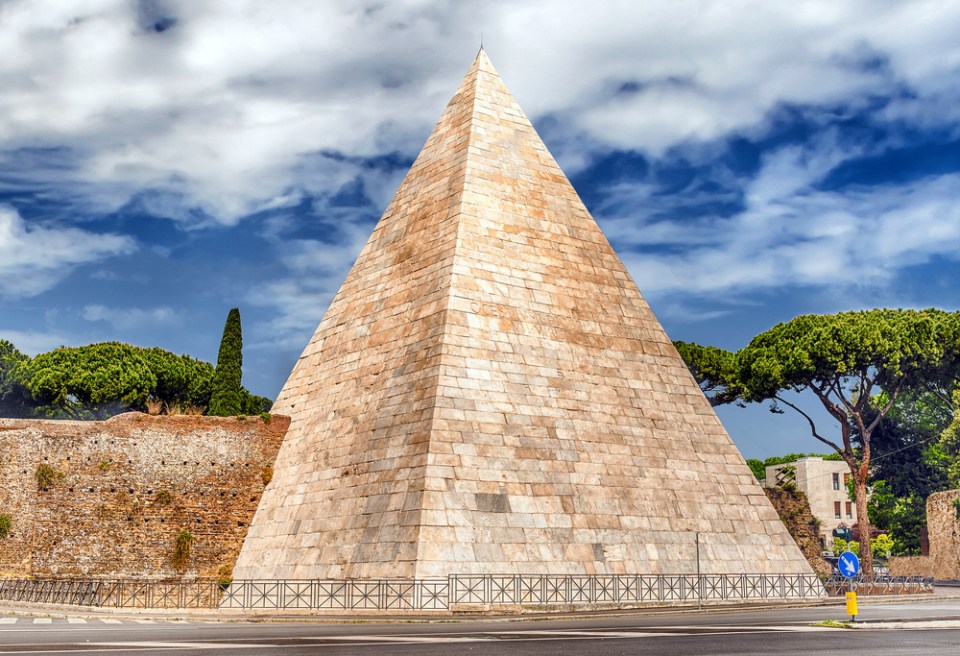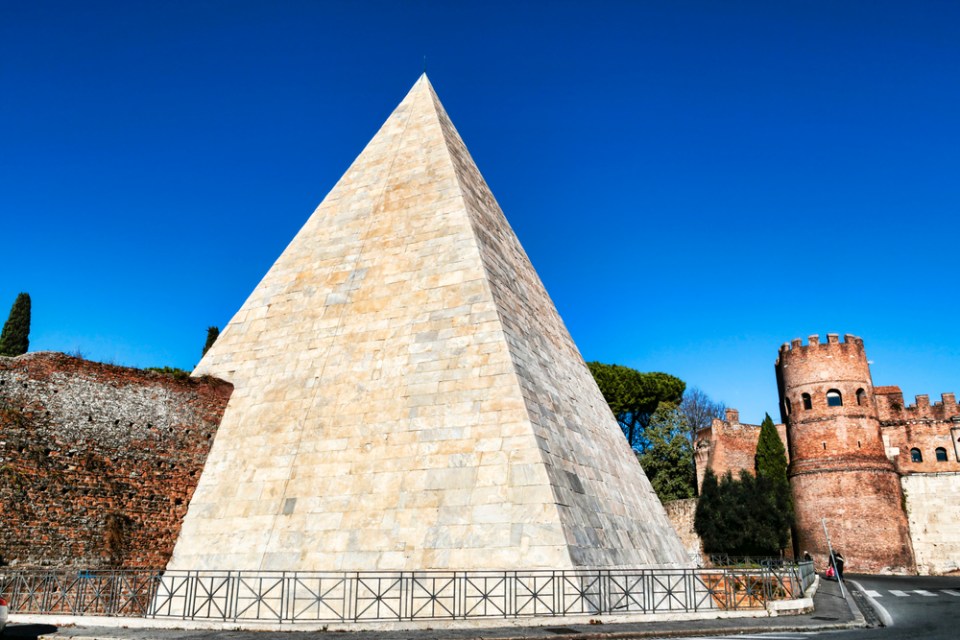Egyptian culture and architecture has long captivated people around the world, including the ancient Romans. After the Romans took control of Egypt in 30 BC, countless aristocratic Romans began to build structures that were similar to those that they viewed in Egypt. A few pyramids even popped up in Rome—only one of which has survived until the present day.

Scenic view of the Pyramid of Cestius, iconic landmark in Testaccio district in Rome, Italy
photo by depositphotos.com
The Pyramid of Cestius stands at a busy intersection in Rome. Cestius was a wealthy magistrate who organized opulent social gatherings that the elite attended during religious ceremonies. Cestius was so obsessed with being buried in a stately Egyptian-style pyramid that he specified in his will that if his pyramid was not completed roughly one calendar year after his death, his descendants would only receive a small portion of his considerable wealth. Needless to say, the Pyramid of Cestius was completed on time.
The Pyramid of Cestius stands nearly 120 feet tall and features a dramatic point at the top. The famed Great Pyramid of Giza in Egypt has a more graduated design because it was constructed with rough blocks of limestone. The Pyramid of Cestius was constructed with concrete and marble which gives the pyramid a much smoother, sleeker appearance. Historians are unsure if Cestius intentionally designed his pyramid to look different, or if the difference was an unintentional result of using alternative building materials.

Rome street view of the Pyramid of Cestius seen from Ostiense Square
Photo by depositphotos.com
As the Roman Empire began to recede, the Pyramid of Cestius was looted and his identity was obscured by time. During the Middle Ages, many Italians believed that the Pyramid of Cestuis contained the remains of Remus and Romulus—twin brothers who are hailed as the founders of Rome. A second larger Italian pyramid which was razed in the 1500s was also thought to house the remains of the legendary brothers.
Visitors can get a clear view of the Pyramid of Cestius by visiting a nearby Protestant cemetery which is bordered by one of Rome’s celebrated Aurelian Walls. Access to the inside of the pyramid is limited, but there are still plenty of spots where you can have the surreal experience of standing in the shadow of an Egyptian-style pyramid on the bustling streets of Rome. If you’re a true history buff, you can track down a set of bronzes that were discovered inside of…
Click Here to Read the Full Original Article at Unusual Places…